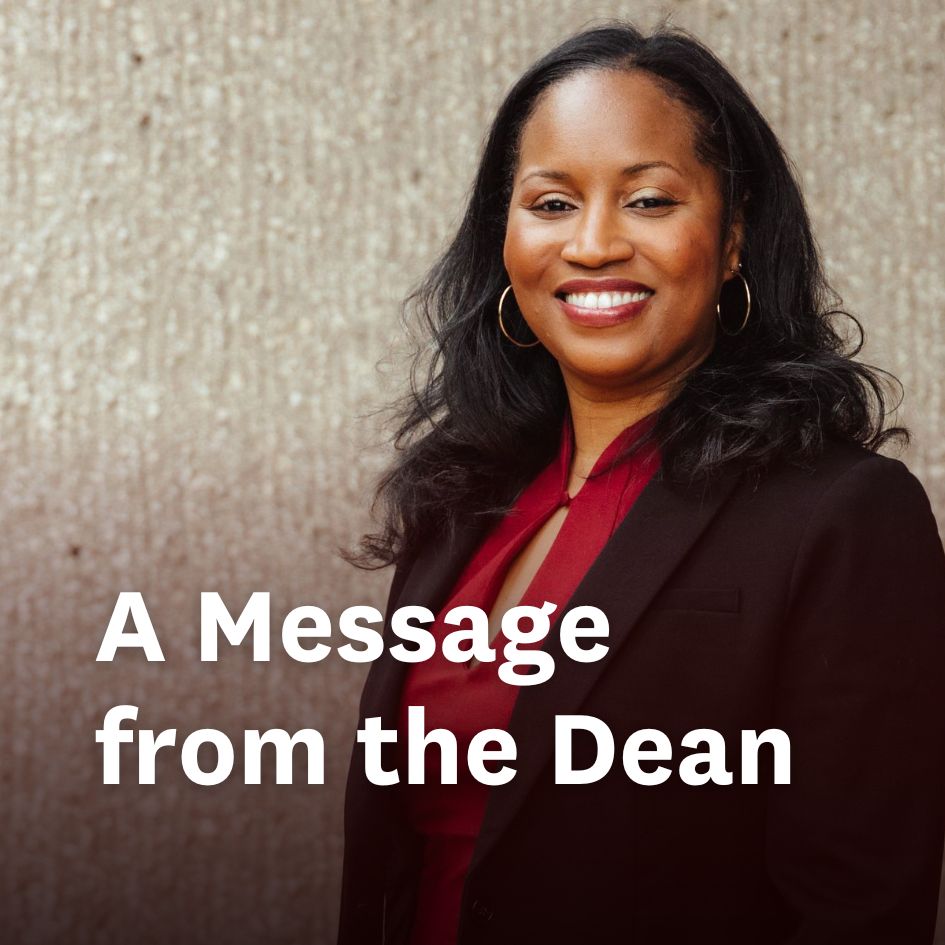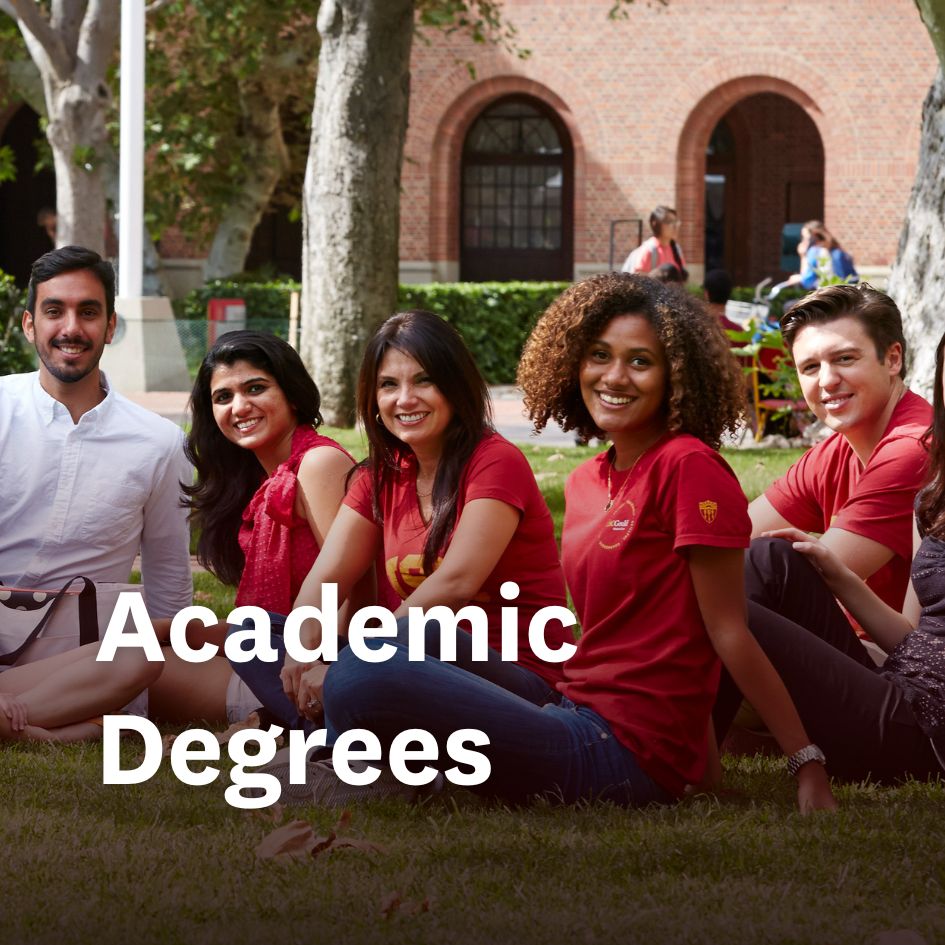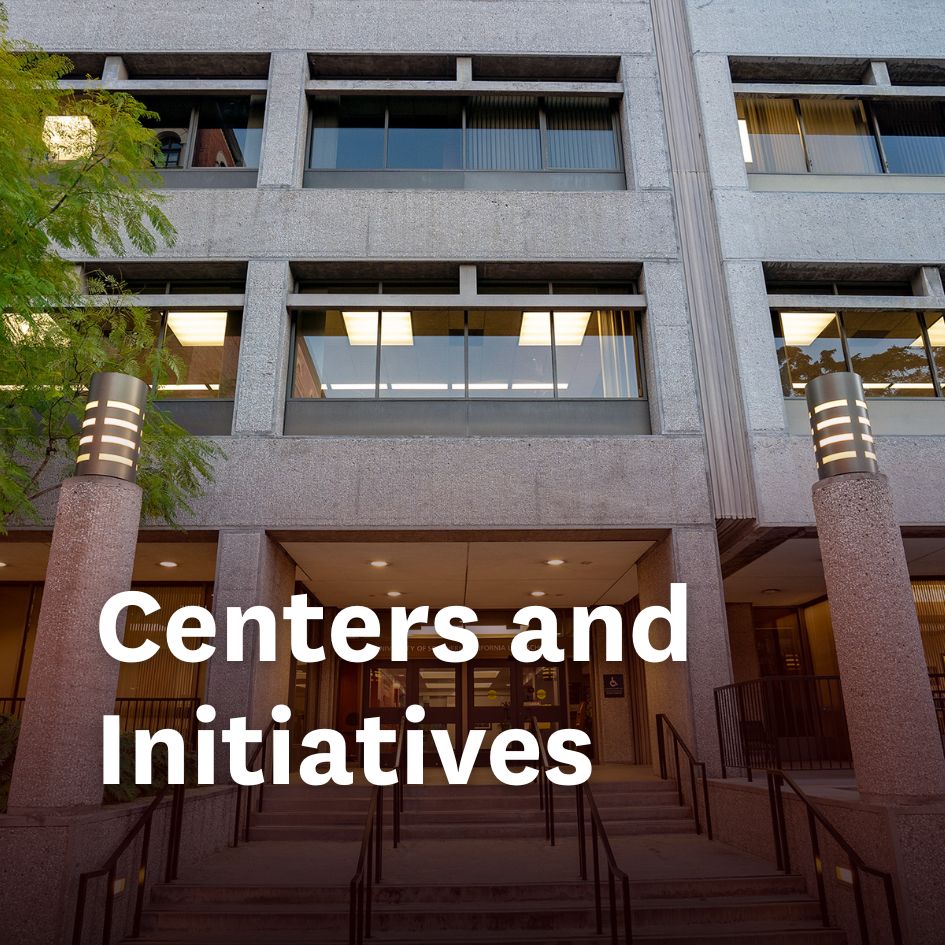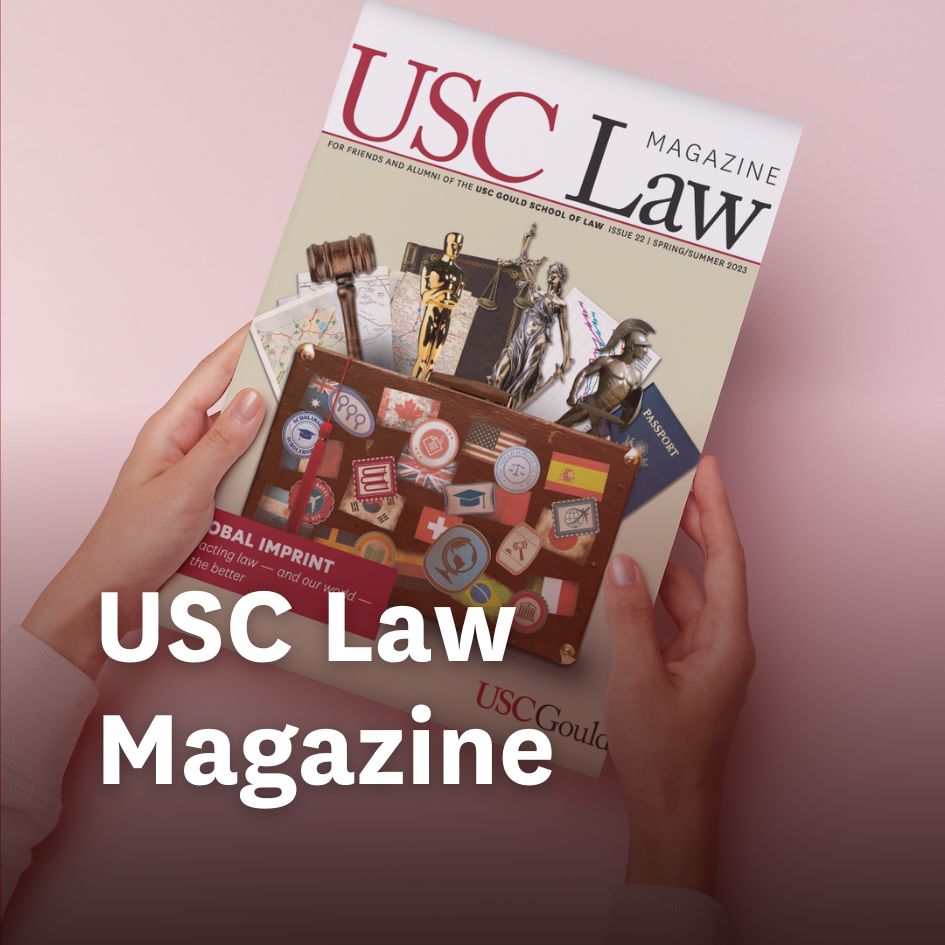New class teaches law and business students to close deals—then face the original deal-makers
Standing before her classmates at the USC Gould School of Law last spring, Megan Prichard ’11 describes how she helped close a deal with legendary media investor Jerry Perenchio to purchase Univision Communications from Hallmark Cards. Along with two MBA students from the USC Marshall School of Business, she represents Televisa and Venevisión, foreign companies that needed an American partner to bring their programming to the United States Hispanic market.
Perenchio, too, is represented by a J.D. candidate and MBA student.
Altogether, the five students describe their negotiations: the issues they spotted, the terms they proposed and how they resolved their differences. Every facet of the deal, from the FCC legal issues to the financing, is reviewed in detail.
Although the original deal was closed in 1991, the students have worked from background information and a prompt sheet not to reconstruct that deal, but to create their own.
Watching the presentations from a seat in the front row is Steve Rader ’81. Co-founder and managing general partner of Clarity Partners, he was the attorney who negotiated Perenchio’s purchase of Univision in 1991.
“It was the deal that made my career,” he says. Once the students have finished, Rader critiques their presentations and tells them how he helped close the deal for Perenchio. He then discusses the good and bad that came of the deal, in effect critiquing his own performance.
This scenario — law and business students negotiating recent deals and then presenting them to the real-life deal-makers — was staged five times in a new course called “Deals: The Economic Structure of Transactions and Contracting,” a joint venture of USC Law and the USC Marshall School.
.jpg) |
| Steve Rader ’81 recounts for students the deal between Jerry Perenchio and Hallmark Cards for Univision Communications. |
“Deals” is at the vanguard of USC Law’s efforts to prepare students to thrive in the business world from the moment they begin working as attorneys.
“The Deals class represents a growing realization across the academy that you have to combine cutting-edge rigorous theoretical analysis with a sense of how theory actually cashes out on the ground,” says USC Law Dean Robert K. Rasmussen. “The message is getting out there that the marriage of law and business gives you a set of tools that can launch you on your career.”
James G. Ellis, dean of the USC Marshall School of Business, shares Dean Rasmussen’s enthusiasm for the joint venture.
“This interdisciplinary class really represents the best of USC,” he says. “It crosses traditional academic boundaries to give students powerful experiences and help them solve complex problems.”
Created by USC Law Prof. Ehud Kamar and USC Marshall School Prof. Mark Weinstein, who holds a joint appointment with the law school, the Deals class invites law and business students to leave their respective comfort zones and learn to work together before embarking on new careers.
“Looking at doctrine or theory is necessary but not sufficient for closing a deal — you must be able to create a structure and a plan,” says Kamar, who worked in mergers and acquisitions at a New York law firm beforebecoming a professor. “Students plan and design deals of all kinds. Once they see and understand the common themes and patterns in all these deals, it’s easier to see how they can help their clients.”
Weinstein wanted to offer the class, he says, because it’s important for businesspeople to understand what lawyers do, and even more important for lawyers to understand what businesspeople do.
“It’s nice to say you want to do a deal, but if it involves anything other than buying screws, then it’s a relationship,” Weinstein says. “Making a deal requires thinking about how relationships are formed. Eventually, this arrangement will be reduced to a contract.”
Although courses on deal-making are a staple of business schools, Kamar and Weinstein brought such a course to USC Law to foster the business-law partnerships that are crucial to successful deals.
“This class is entirely about cooperation,” Kamar says. “For a good deal, it is not enough to get the parties to sign the agreement; all the work really starts after the lawyers and the bankers go home. You have to live with the business relationship you entered into and make it work.”
The course’s most popular feature: bringing in the lawyers and principals behind some of the business world’s most audacious and successful deals to critique the students’ presentations.
Learning from the Pros back in the law school classroom, Rader is visibly enjoying himself. He is impressed by the students’ work and enjoys speaking about how the deal was reached.
“We were in litigation regarding this deal as recently as 2010,” he says. “If my team and the team from the foreign partners had worked out all these issues the way you worked them out, I don’t think there would have been that kind of litigation.”
After detailing for students the 18 months of negotiations in which he participated, Rader described some tenets of the deal that were particularly inventive. Among them was an agreement to pay each foreign company a 15 percent royalty on sales, regardless of which company’s programming was used, and 50-50 control of the network between Perenchio and the foreign companies.
The goal was to ensure the parties focus on the profits of the new business and not on what each of them brought to the table.
“We worked toward the greater good,” Rader says. “The greater good was the belief that if we built this company into a network that looked like CBS or NBC, we would create tremendous value.”
Later, Rader says the students could already be in practice, such was their level of sophistication.
“I was blown away,” he says. “They came up with approaches we hadn’t considered but should have considered.” Rader notes that no such class existed when he was at USC Law, and that when he started practicing, he was offered very little legal or business training.
“When I started out practicing law, the partners told me, ‘Good luck – try not to commit malpractice,’” he jokes. “These students won’t have as much trial by combat.”
Prichard, who represented the two Spanish-language programmers, said she learned that being diligent in identifying issues and recommending solutions does not preclude a more creative approach to deal-making.
“A lot of times, as a lawyer, you feel a bit constrained,” she says. “Hearing Steve talk opened my eyes to how you can think outside the box to the advantage of your client.”
 |
| Profs. Mark Weinstein and Ehud Kamar created the course to enable law and business students to learn from each other while negotiating deals together. |
Weinstein and Kamar emphasize that there are many ways to approach the same set of problems presented by a deal.
“There’s a natural tendency to see how the deal was done and assume it was the best way to do it,” Weinstein says. “But students can see alternative ways to structure it.”
MBA candidate Tomer Petel ’11, whose team represented Perenchio, says he loved the mix of theory and real-world application the deal presented.
“It was great to be able to focus on one deal for three weeks,” he says. “It’s important because you’re going to be working on deals that require you to go into detail. It felt real world.”
Steve Rader wasn’t the only Trojan to critique a student presentation.
Stanley Gold ’67, president and CEO of Shamrock Holdings and former member of the Walt Disney Company’s board of directors, witnessed students put together a deal for the buyout of Tadiran Com. Ltd. by Talla Communication Industries.
Long after he finished critiquing the students’ presentations, Gold spent the better part of two hours sharing insights gained from decades of work as a principal investor. Students were in his thrall as he spilled anecdote upon anecdote from his biggest investment deals, drawing especially on his time at Disney.
“I was impressed with the students’ work, the thoughtfulness, especially the deal team,” Gold says. “They didn’t have as many facts as I had, but with what they had, they did an A-plus job. The fact that I could add some context to it, I hope I gave them a sense of what the real world is like, which is what this class is designed to do.”
He also gave his heartiest endorsement of the Deals class and any ventures that bring together law and business students.
“I think the more lawyers can appreciate businesspeople, and the more businesspeople can appreciate lawyers, commerce will be the beneficiary,” he says.
Another deal, based on Colony Capital’s acquisition of Miramax in 2010, placed students in the position of Tom Barrack ’69 and Ron Tutor ’63, two USC graduates who together acquired one of the industry’s finest film libraries.
MBA candidate Ben Anderson ’12, who worked on the Colony Capital deal, says he especially appreciated the opportunity to present to the principals behind the original transaction.
“We do a lot of cases in business school where you try to step into the mind of the CEO and then we discuss it in class, but there’s no real accountability for whether our reasoning or conclusions are correct,” he says. “So to have the guys who sat in the offices and went through all the meetings say, ‘You did this really well,’ or ‘This part you may have missed,’ is a valuable learning experience.”
Thinking Like a Lawyer (Who Can Think Like a Businessperson)
Anderson said working with law students was revealing.
“The opportunity to have a class with law students, who think and do things differently, is invaluable,” he said.
He and fellow MBA candidate Evan Pearlman ’12 said they would have enjoyed working with even more of the law students.
“Working with the law students gave more credibility to the work we did,” Pearlman said. “If we hadn’t worked with law students, Ben and I may have come up with some assumptions that aren’t plausible in the real world.”
Shoshana Zimmerman ’12 worked with Anderson and Pearlman on the Colony Capital deal.
She said she found that her business school partners had completely different perspectives on what the important issues were.
“Their perspective was along the lines of, ‘How do you value this?’ And mine was, ‘How do we phrase this? How do we structure it so we don’t end up with assets we don’t want?’” she says.
Zimmerman says the class has made her more comfortable —and credible— working with attorneys at Sheppard Mullin, where she worked as a summer associate.
“Since this class, it’s been a great advantage to be able to speak the language of business clients,” she says. “Accounting and corporate finance are things that don’t come up in law school.”
.jpg) |
| Joseph Volk ‘11, Alec Talan ‘11, Alex Boone ‘11 |
Law students noted other differences between the legal and business approaches. Prichard says her MBA partners approached the ideas more holistically and adopted a team-oriented approach not typical of her law classes.
“The law students had given more thought to points they wanted and what they deemed acceptable positions, probably as a result of having taken contract negotiations,” she says. “While the business students focused more on acceptable outcomes, we had a better idea of what was within the realm of possibility.”
That difference was noted by Richard Nanula and Justin Chang, the real-life principals behind Colony Capital’s acquisition of Miramax.
“A good attorney in a deal doesn’t just tell you what you can’t do,” Chang says. “He or she has to be able to tell you what you can do, to understand what you’re trying to achieve.”
Kamar and Weinstein, the professors who created the course, say they were delighted with how well the students developed.
“We saw a progression,” Kamar says. “Every week, the students implemented and incorporated into their work the lessons of the previous week. The teams became a lot more cooperative with each other than they were initially.”
Weinstein says he was inspired by his students.
“I had a fear that they’d be at the outer planets of the solar system, but by and large, they were spot on.”
Dean Rasmussen, who attended several of the deal presentations, noted that the class aims to prepare students to add value to their firms sooner.
“When I talk to the leaders of firms, the thing they say can be lacking on the part of new associates is the sense of context: what business are you representing, what does that client need out of this transaction?” he says. “Thanks to courses like this, when our students start their careers, they will be that much further ahead of the game.”

















